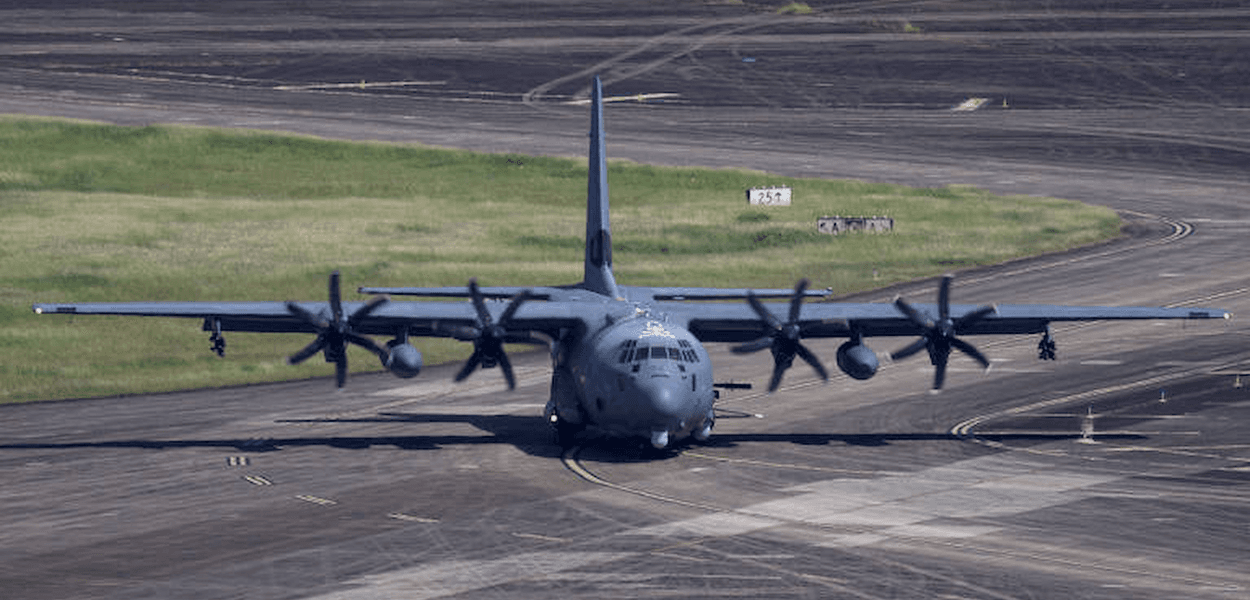247 - The recent military movement of the United States in the Caribbean, under the administration of President Donald Trump, has gained a new symbol of power: the AC-130J Ghostrider. The heavy attack aircraft, known as the"flying tank," has returned to operating in the region, marking a significant escalation in the US military presence near South America and increasing tensions with Venezuela.
According to the newspaper O Globo, which cites the New York Times, the aircraft was spotted at a base reactivated by Trump in Puerto Rico and, more recently, at a US-controlled facility at the international airport in San Salvador, the capital of El Salvador. The country is governed by Nayib Bukele, one of Trump's main allies on the continent. According to the US newspaper, the Ghostrider was used in attacks in the Pacific that left at least 75 dead, although the Pentagon has not confirmed the type of weaponry used.
Attack aircraft with heavy arsenal
The AC-130J is operated by the United States Air Force Special Operations Command. It operates alongside the P-8A Poseidon, considered the world's most advanced maritime patrol aircraft, and an unmarked C-40 Clipper—a military version of the Boeing 737-800, whose role has not yet been disclosed.
Defense experts interpret the presence of these aircraft as part of the US strategic encirclement of Nicolás Maduro's government in Venezuela.
The power of the"flying tank"
Developed from the C-130 Hercules, the Ghostrider is considered the fifth generation of"flying tanks" in the US Air Force. Created in 2012 and officially introduced in 2019, the model costs approximately US$165 million (equivalent to R$870 million).
The aircraft combines optical and infrared sensors with a powerful arsenal of missiles, guided bombs, and two cannons—one 30 mm and the other 105 mm, comparable to a land-based howitzer. This combination allows the Ghostrider to execute devastating low-altitude attacks against targets on land or at sea.
History of destruction in recent wars
During the wars in Afghanistan and Iraq, earlier versions of the AC-130 gained notoriety for their accuracy and destructive capacity, being responsible for eliminating extensive Taliban fighter camps.
US military escalation
This week, the aircraft carrier USS Gerald Ford, considered the largest in the world, arrived in the Caribbean region as part of a deployment ordered by President Donald Trump. The action is part of an anti-drug strategy that, according to the Pentagon, seeks to"strengthen the U.S.'s ability to detect, monitor, and disrupt illicit actors and activities that compromise the security and prosperity of the Homeland."
The vessel is part of a fleet comprised of eight warships, a nuclear submarine, and F-35 aircraft, and is part of a series of naval, air, and land operations that the Pentagon has intensified in the Caribbean and Puerto Rico, where it reactivated a military base that had been closed for more than two decades.
Attacks against vessels
Since the start of operations, the US has attacked at least a dozen vessels, resulting in the deaths of more than 70 people. Washington claims that the targeted vessels were transporting drugs, although it has not presented any evidence to support this alleged drug trafficking claim.
Tension with Venezuela
The US military escalation in the Caribbean and Pacific region has increased tensions in the area, especially with Venezuela. Washington accuses Venezuelan President Nicolás Maduro of leading an international drug cartel, an accusation the president categorically denies.
There is speculation that the White House authorized intelligence operations on Venezuelan soil to weaken Maduro's power. In response, Maduro ordered a"massive mobilization" of troops and issued a warning about the risk of an unprecedented military escalation in Latin America.

